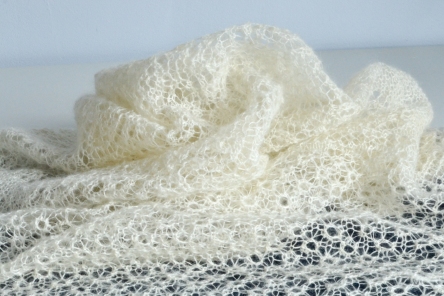Trying to write an unbiased comparison of wool from sheep and alpaca fibres has virtually defeated me! All descriptions of alpaca seem to be aimed at persuading me that alpaca is by far a superior fibre to wool from sheep. I am far from convinced and have aimed to write a non biased account. I like to use alpaca to spin very fine yarn for knitting lace. So what follows is the best I can manage. If you have any sources that are unbiased besides the one quoted below I would like to know.
Alpacas have been valued for their fibre for many thousands of years. The fibre is very different from wool. There are two varieties of alpaca, by far the most common is the huacaya (over 90% of all alpaca)and suri (10% or less). It is the huacaya which is regarded as woolly while the suri have straight silky fibres, which are much more difficult to spin (for me anyway).
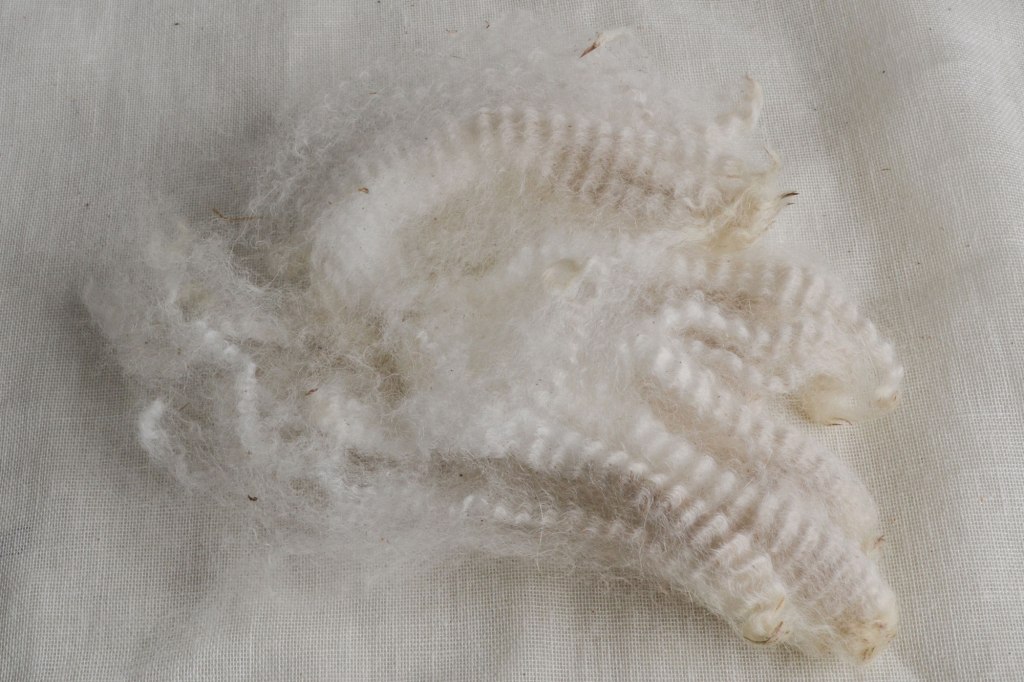
The fleece above has a good crimp. This is just as I received it and it has not been washed.
Comparison between alpaca and wool
The fleece is ‘heavy’ comapred to wool and this can give a garment a good drape but others would say the garment sags and easily looses it’s shape. The right kind of fleece with plenty of crimp can be spun as superfine as wool and can look delightful in a fine lace shawl. Many knitters prefer to work with finer alpaca yarns than thicker ones for this reason.

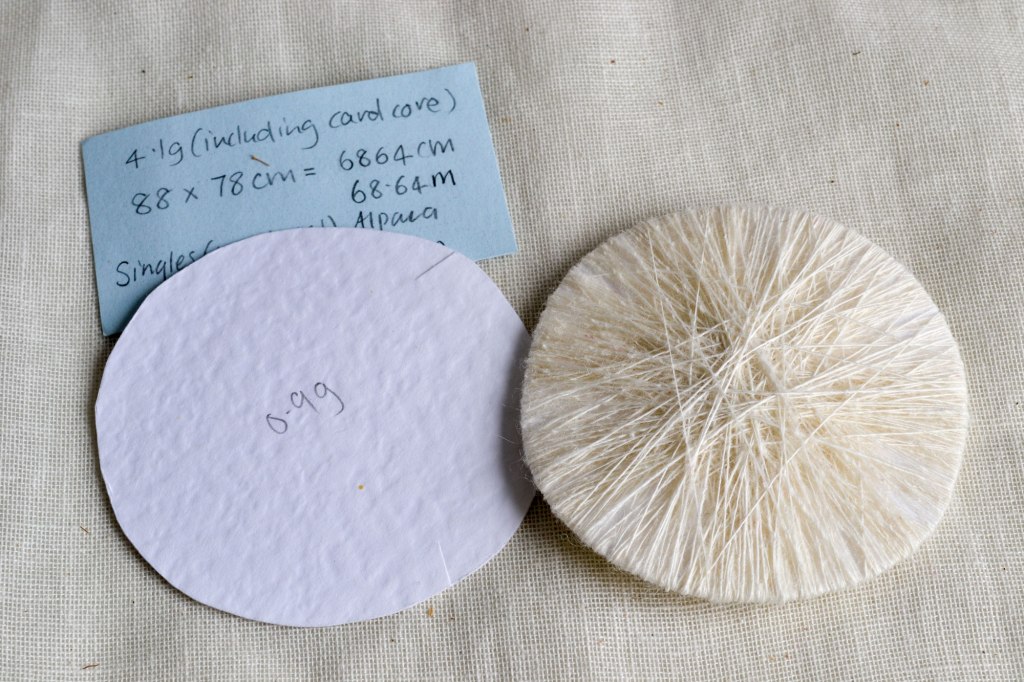
Working out the details for my fine spun alpaca shown above
wpi (wraps per inch) 75 (from the gauge); NM 21 (actually 21.45)
This shows a trial of the yarn, deciding on needle size particularly.
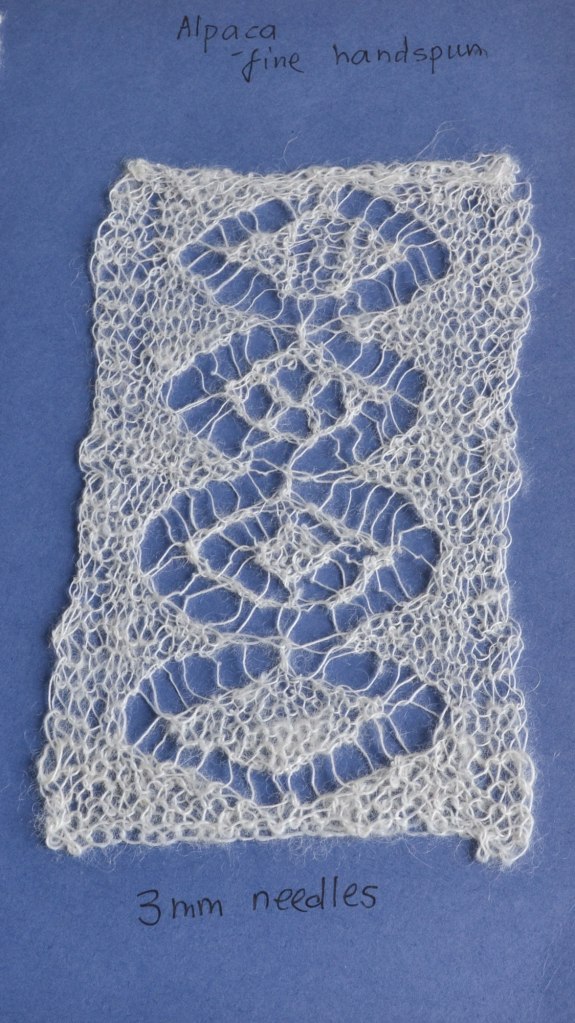
Differences between alpaca and wool fibres:
Alpaca fibres, often called hairs, are hollow whereas in wool air gets trapped more easily between the fibres
`I have failed to find a balanced and detailed comparison of the internal structure of the two. They are both protein fibres.
Although there are scales covering the alpaca fibre as there are in wool, those in alpaca protrude about half as far as those in wool. The advantage of this is that individuals who can’t tolerate wool next to the skin can often wear alpaca instead.
Alpaca fibre has ‘no’ lanolin in comparison to wool, and whilst it can make spinning the fibre more challenging, it also helps those that can’t tolerate wool on their skin
Substantially more of an alpaca fleece can be used than the fleece of a sheep.
Dyeing alpaca and wool fibres
Alpaca does not take up natural dyes as well as wool. Despite what I read this is my own conclusion.The top pair showing dyeing at 10% cochineal and the lower pair showing dyeing at 20% with cochineal.
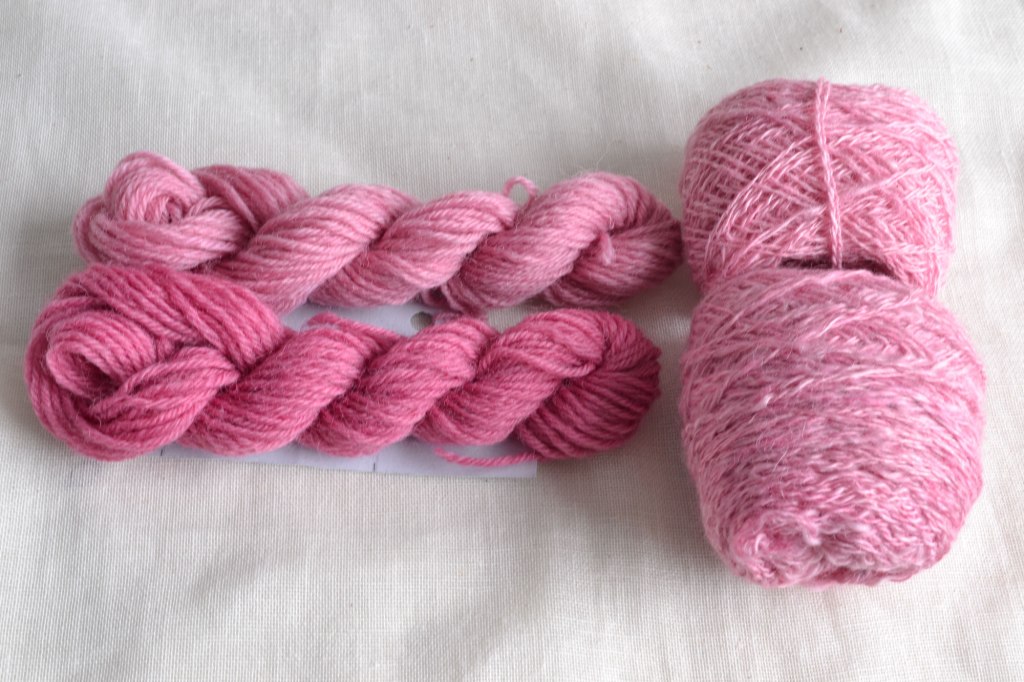
Note
The gauge shown above has a scale for lace weight yarn on the reverse. It is available from fleecelovedproducts@gmail.com or from http://www.beakerbutton.co.uk
Ref:
Robson D and Ekarius C: Fleece and Fibre Sourcebook
